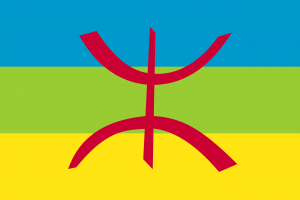Language/Central-atlas-tamazight/Grammar/How-to-Use-Be
Hi Central Atlas Tamazight learners! 😊
In this lesson, we will focus on the verb "be" and its usage in Central Atlas Tamazight grammar. The verb "be" is a fundamental part of any language, and its correct usage can greatly improve your communication skills. Let's get started!
What is the Verb "Be"?
The verb "be" is used to describe a state or condition of someone or something. It is also used to connect a subject to a complement, which provides more information about the subject. In Central Atlas Tamazight, the verb "be" can be translated into "am", "is" or "are".
Present Tense
The present tense refers to actions or states that are currently happening. Here is how the verb "be" changes in the present tense:
| Central Atlas Tamazight | Pronunciation | English |
|---|---|---|
| Amni | am-ni | I am |
| Awni | aw-ni | You are (singular) |
| Aya | a-ya | He/She is |
| Annagh | an-na-gh | We are |
| Aynagh | ay-na-gh | You are (plural) |
| Aydannagh | ay-dan-na-gh | They are |
Let's have a dialogue to see the usage in context:
- Person 1: Amni (I am)
- Person 2: Annagh! Dakhlan tawuriqt nakhla. (We are! We are learning together.)
Past Tense
The past tense refers to actions or states that have already happened. Here is how the verb "be" changes in the past tense:
| Central Atlas Tamazight | Pronunciation | English |
|---|---|---|
| Amtti | am-ti | I was |
| Awti | aw-ti | You were (singular) |
| Aytti | ay-ti | He/She was |
| Annttay | ann-ta-y | We were |
| Aynntay | ayn-nta-y | You were (plural) |
| Aydannay | ay-dan-nay | They were |
Let's have another dialogue to see the usage in context:
- Person 1: Amtti ass n yisaragen imazighen (I was in a Berber music festival)
- Person 2: Awti aydoughaln mmaḍ imazighen. (You were dancing with Berber friends.)
Negative Form
To make the negative form of the verb "be", we add the word "ur" before the verb. Here is how it changes in the present and past tense:
| Central Atlas Tamazight | Pronunciation | English |
|---|---|---|
| Ur amni | ur am-ni | I am not |
| Ur awni | ur aw-ni | You are not (singular) |
| Ur aya | ur a-ya | He/She is not |
| Ur annagh | ur an-na-gh | We are not |
| Ur aynagh | ur ay-na-gh | You are not (plural) |
| Ur aydannagh | ur ay-dan-na-gh | They are not |
| Ur amtti | ur am-ti | I was not |
| Ur awti | ur aw-ti | You were not (singular) |
| Ur aytti | ur ay-ti | He/She was not |
| Ur annttay | ur ann-ta-y | We were not |
| Ur aynntay | ur ayn-nta-y | You were not (plural) |
| Ur aydannay | ur ay-dan-nay | They were not |
For example:
- Person 1: Ur annagh, ur aya, ur aydannay! (We are not, he is not, they are not!)
- Person 2: Aya di mzkin. (He is in his house.)
Interrogative Form
To form interrogative sentences using the verb "be", we simply swap the positions of the subject and the verb. Here are some examples:
- Amni? (Am I?)
- Aya mzkin? (Is he/she at home?)
- Annagh imi nghar? (Are we really friends?)
Conclusion
Congratulations! You now know how to properly use the verb "be" in Central Atlas Tamazight. To improve your knowledge of the language, you can also use the Polyglot Club website. Find native speakers and ask them any questions! Don't forget to check out our Grammar section for more lessons. 😊
➡ If you have any questions, please ask them in the comments section below.
➡ Feel free to edit this wiki page if you think it can be improved. 😎

